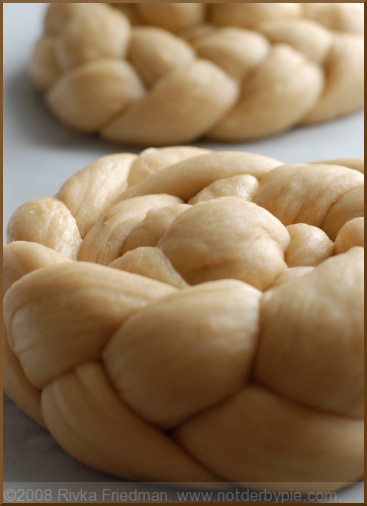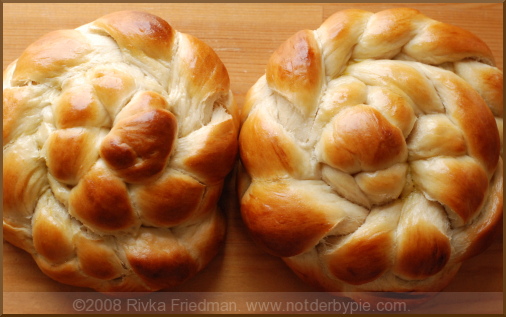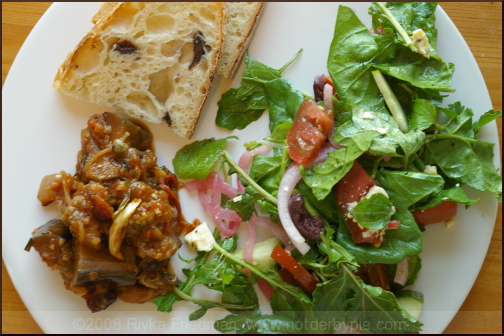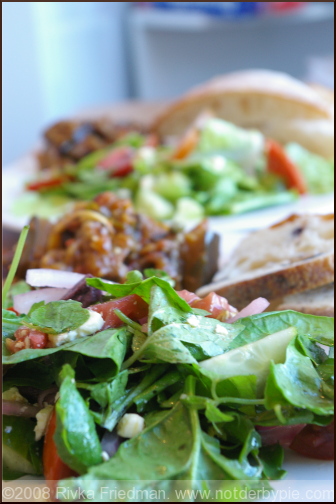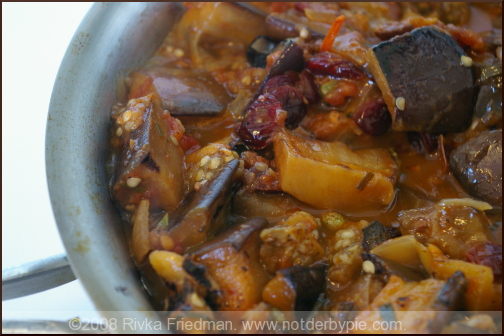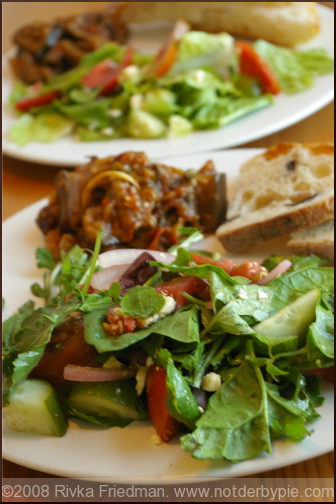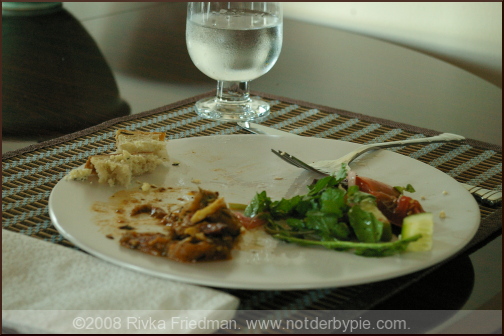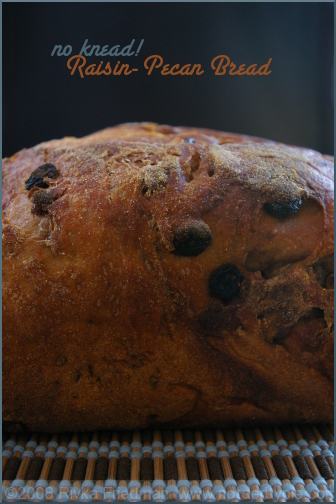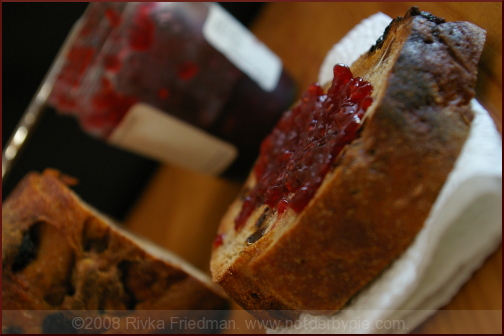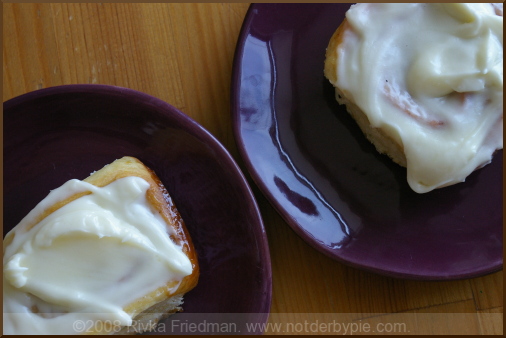 If you've gone this long without making cinnamon buns (which, shockingly, I have), it's likely not because you're skeptical that they'll be worth it. What other foods smell ridiculously appetizing, even when what you smell is usually a corporate chain version loaded with high fructose corn syrup and other delicacies? No doubt they taste fantastic and are worth the effort, so that's not the cause of hesitation. More likely, you're just a bit daunted by the task. To me, cinnamon buns have always sounded like a very work-intensive, time-intensive project, possible only for those with half a day to devote to the task. I just figured that with a project as seemingly complex as cinnamon buns, I should hold off until I had an occasion to do them. Perhaps you did, too.
If you've gone this long without making cinnamon buns (which, shockingly, I have), it's likely not because you're skeptical that they'll be worth it. What other foods smell ridiculously appetizing, even when what you smell is usually a corporate chain version loaded with high fructose corn syrup and other delicacies? No doubt they taste fantastic and are worth the effort, so that's not the cause of hesitation. More likely, you're just a bit daunted by the task. To me, cinnamon buns have always sounded like a very work-intensive, time-intensive project, possible only for those with half a day to devote to the task. I just figured that with a project as seemingly complex as cinnamon buns, I should hold off until I had an occasion to do them. Perhaps you did, too.
Such an occasion arrived last Sunday, when a bunch of us threw a bridal shower for our friend D, who's getting married in November. D's not so into the gush-gush-rip-the-wrapping-paper-ohh-ahh stuff, so when B suggested a book shower, D readily agreed. It's really right up her alley. We pitched the shower as a chance to get D a book that belongs on every shelf, a book you especially love, or a book that you thought D would love -- and, considering we got lots of oohs and ahhs and no doubles, I think it was a success!
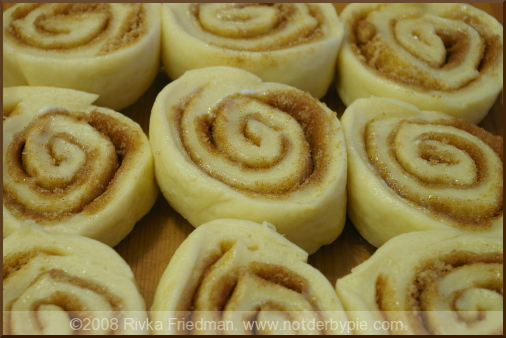
Anyway, B suggested that we make cinnamon buns for the shower (yes, she's full of good ideas, that B!) and I'd been meaning to make them for a while, so I jumped at the chance. We both just assumed they'd take a while, so I started them early at my house, the plan being that I'd bring the risen dough over to her place and we'd fill, roll, and bake them together.
Well, I started a little earlier than planned, and before I knew it, it was time to roll out the buns but it wasn't time to go over to B's. Sorry, B -- I owe you cinnamon-bun-round-two! Needless to say, I managed on my own. In fact, I more than managed -- I practically cranked out the buns with little to no effort, and they looked totally gorgeous, if I dare say so myself. Let my experience demystify this ostensibly massive undertaking. It's no biggie, small beans, piece-a-cake. Get my drift? Time does most of the work -- all you really need is enough patience to not jump out of your chair before they're ready.
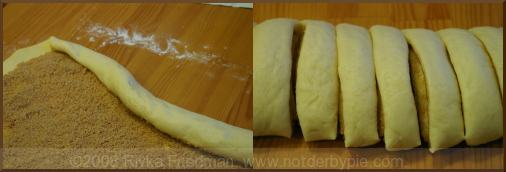
B made the cream cheese glaze. Her report: so easy, and it took only 2 minutes. What are you waiting for?? And in case it's not screamingly obvious: the cream cheese glaze is the best part. By far. If you're like me, always worried that you won't get enough of the goo on your cinnamon bun, don't fret: this recipe made enough for me to really slather it on and still have some left over to lick. mmmm.
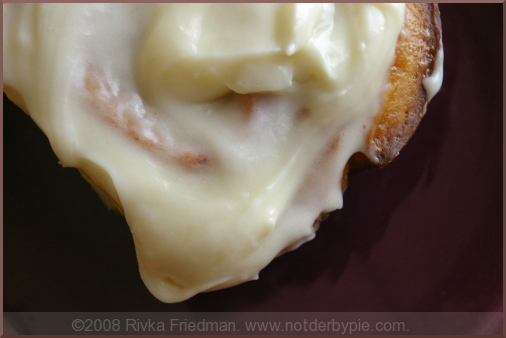
Cinnamon Rolls with Cream Cheese Glaze
from Bon Appetit
Dough:
1 cup whole milk
3 tablespoons unsalted butter
3 1/2 cups (or more) unbleached all purpose flour, divided
1/2 cup sugar
1 large egg
2 1/4 teaspoons rapid-rise yeast (from 2 envelopes yeast)
1 teaspoon salt
Nonstick vegetable oil spray
Filling:
3/4 cup (packed) golden brown sugar
2 tablespoons ground cinnamon
1/4 cup (1/2 stick) unsalted butter, room temperature
Glaze:
4 ounces cream cheese, room temperature
1 cup powdered sugar
1/4 cup (1/2 stick) unsalted butter, room temperature
1/2 teaspoon vanilla extract
For dough:
Combine milk and butter in glass measuring cup. Microwave on high until butter melts and mixture is just warmed to 120°F to 130°F, 30 to 45 seconds. Pour into bowl of stand mixer fitted with paddle attachment. Add 1 cup flour, sugar, egg, yeast, and salt. Beat on low speed 3 minutes, stopping occasionally to scrape down sides of bowl. Add 21/2 cups flour. Beat on low until flour is absorbed and dough is sticky, scraping down sides of bowl. If dough is very sticky, add more flour by tablespoonfuls until dough begins to form ball and pulls away from sides of bowl. Turn dough out onto lightly floured work surface. Knead until smooth and elastic, adding more flour if sticky, about 8 minutes. Form into ball.
Lightly oil large bowl with nonstick spray. Transfer dough to bowl, turning to coat. Cover bowl with plastic wrap, then kitchen towel. Let dough rise in warm draft-free area until doubled in volume, about 2 hours.
For filling:
Mix brown sugar and cinnamon in medium bowl.
Punch down dough. Transfer to floured work surface. Roll out to 15x11-inch rectangle. Spread butter over dough, leaving 1/2-inch border. Sprinkle cinnamon sugar evenly over butter. Starting at 1 long side, roll dough into log, pinching gently to keep it rolled up. With seam side down, cut dough crosswise with thin sharp knife into 18 equal slices (each about 1/2 to 3/4 inch wide).
Spray two 9-inch square glass baking dishes with nonstick spray. Divide rolls between baking dishes, arranging cut side up (there will be almost no space between rolls). Cover baking dishes with plastic wrap, then kitchen towel. Let dough rise in warm draft-free area until almost doubled in volume, 40 to 45 minutes.
Position rack in center of oven and preheat to 375°F. Bake rolls until tops are golden, about 20 minutes. Remove from oven and invert immediately onto rack. Cool 10 minutes. Turn rolls right side up.
For glaze:
Combine cream cheese, powdered sugar, butter, and vanilla in medium bowl. Using electric mixer, beat until smooth. Spread glaze on rolls. Serve warm or at room temperature.
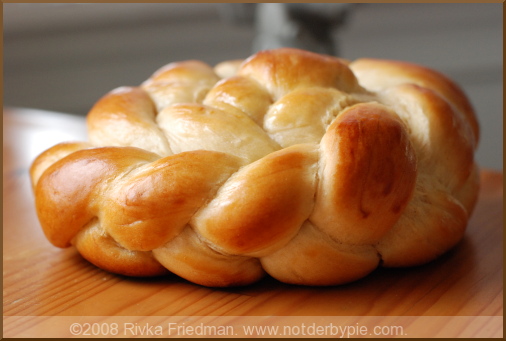 To all those celebrating the Jewish New Year (and to all of you, regardless of whether or not this happens to be the start of a New Year for you)...
To all those celebrating the Jewish New Year (and to all of you, regardless of whether or not this happens to be the start of a New Year for you)...